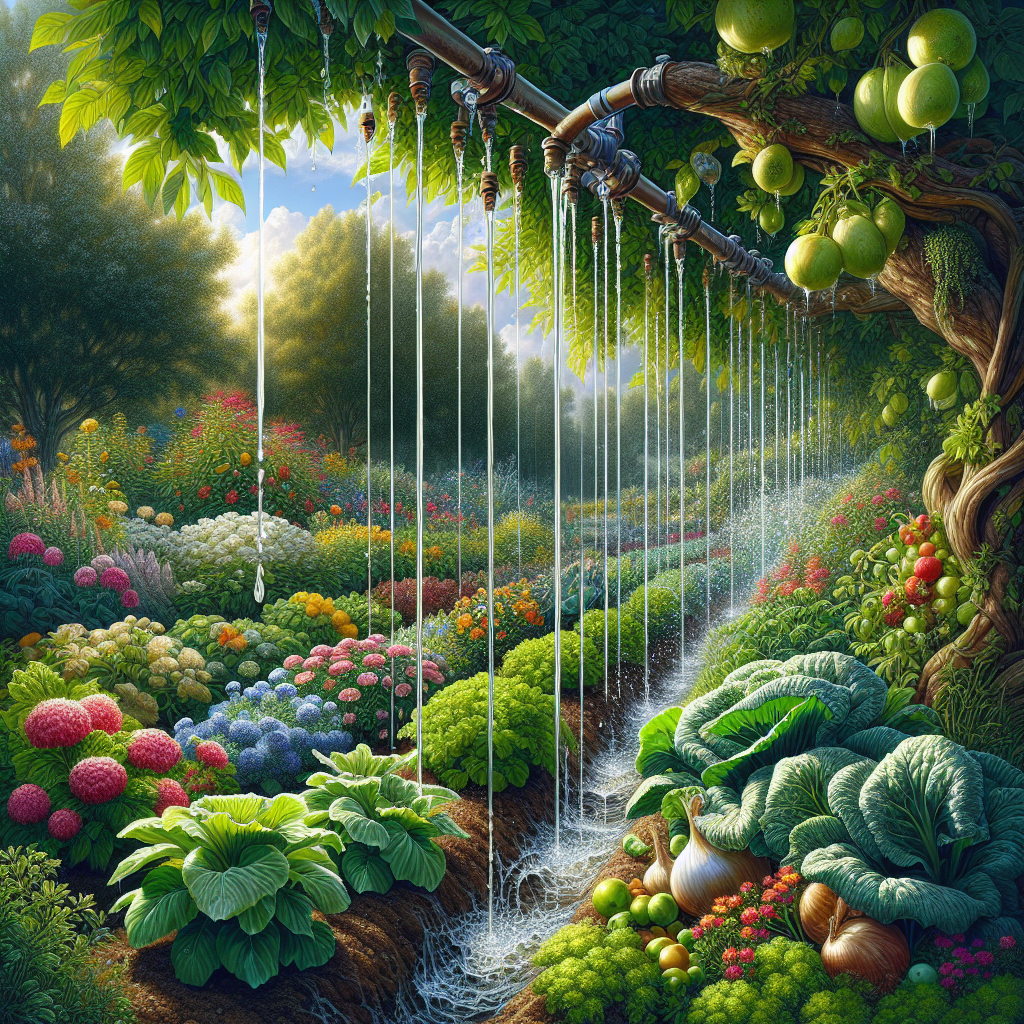Unleashing the Power of Slow Drip Irrigation in Your Garden
In today’s increasingly environmentally conscious world, finding sustainable ways to optimize resource usage has become a top priority. One area where this is particularly important is in our gardens. As water scarcity becomes a global issue, traditional irrigation methods are proving to be inefficient and wasteful. In contrast, slow drip irrigation offers a solution that maximizes water usage while minimizing waste. In this article, we will explore the benefits and practical applications of slow drip irrigation systems in gardens.
Slow drip irrigation is a method that delivers water directly to the plant’s roots at a slow and steady pace. Unlike traditional overhead sprinklers or hand-watering techniques, which tend to result in water loss due to evaporation or runoff, slow drip irrigation ensures that every drop counts. By allowing the water to seep slowly into the soil near the plant’s roots, this method enables optimal absorption and reduces unnecessary evaporation.
One of the key advantages of slow drip irrigation is its ability to conserve water. According to studies, this method can reduce water usage by up to 50% compared to conventional watering techniques. This reduction is achieved through minimal evaporation and controlled delivery directly to the plants’ root zones. Additionally, since water is delivered in small quantities over an extended period, it encourages deeper root growth as plants seek out moisture sources deeper within the soil.
Another significant benefit of slow drip irrigation is its efficiency in preventing weed growth. Traditional watering methods often inadvertently nourish weeds along with desired plants, promoting weed growth and competition for resources such as sunlight and nutrients. However, because slow drip irrigation specifically targets individual plants while bypassing surrounding areas, weeds are less likely to thrive.
Furthermore, using a slow drip system helps maintain soil moisture levels more effectively than conventional methods. The controlled release of water allows for consistent hydration without flooding or saturating the soil excessively. This advantage not only contributes to better plant health but also reduces the risk of soil erosion.
Setting up a slow drip irrigation system in your garden is relatively simple. Here are a few key steps to get you started:
1. Assess your garden’s layout: Determine the size, shape, and specific watering needs of your garden. Consider factors such as slope, sun exposure, and types of plants present to design an efficient system.
2. Choose the right equipment: There are various slow drip irrigation kits available in the market. Look for options that include tubing, emitters or drippers, connectors, and a timer if desired. These components can be easily customized to accommodate different garden layouts.
3. Install the system: Lay out the tubing according to your garden design, ensuring that it reaches all areas effectively. Connect emitters or drippers at appropriate spacing intervals based on plant requirements.
4. Test and adjust: Before fully implementing the system, it is essential to check for leaks and ensure proper water flow through each emitter or dripper. Adjustments may need to be made based on individual plant needs.
5. Monitor and maintain: Regularly inspect and maintain your slow drip irrigation system. Check for clogged emitters or drippers, uneven water distribution, or any other issues that may impact its operation.
In addition to conserving water and promoting healthier plants, slow drip irrigation offers various other advantages worth mentioning. For instance, by minimizing foliage wetness during watering, this method helps reduce the risk of diseases caused by certain fungi or bacteria that thrive in damp environments.
The controlled release of water also prevents nutrient leaching from the soil as compared to traditional watering methods where excessive water can wash away essential nutrients before plants have a chance to absorb them fully.
Furthermore, slow drip irrigation systems can be coupled with smart technologies such as soil moisture sensors or weather-based controllers for even more precise water delivery based on real-time conditions. These additional tools further enhance efficiency by preventing overwatering during rainy periods or watering when it is unnecessary.
In conclusion, slow drip irrigation is a sustainable and efficient method to water your garden. By adopting this technique, you can significantly reduce water waste, promote plant health, and minimize weed growth. With the added benefits of easy installation and maintenance, slow drip irrigation empowers gardeners to optimize their resource usage while cultivating beautiful, thriving gardens.













